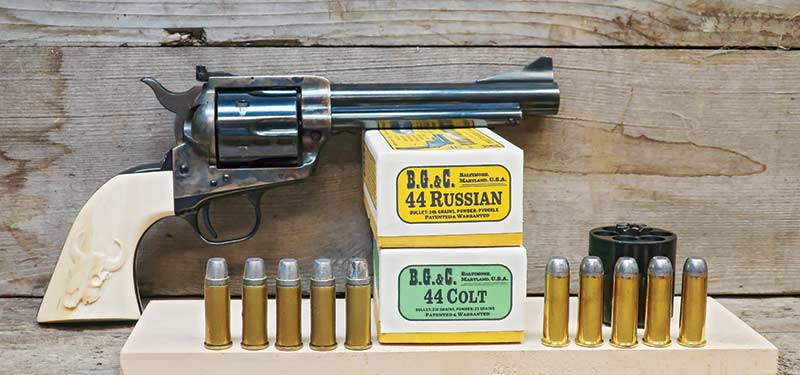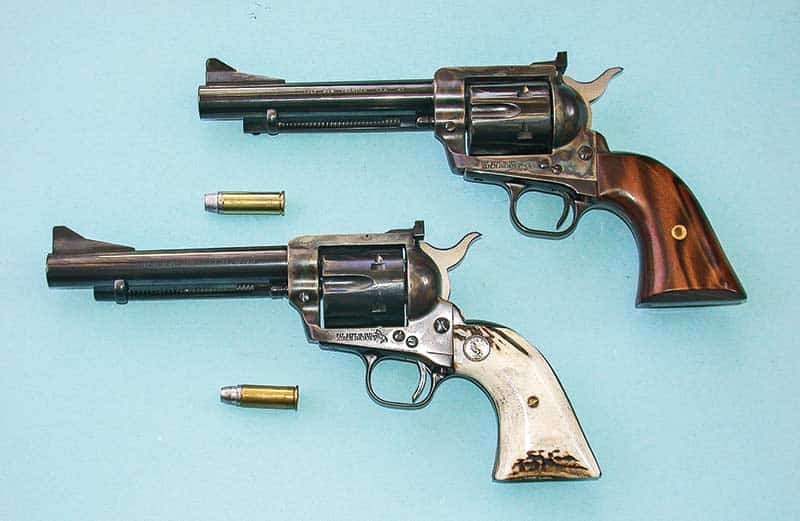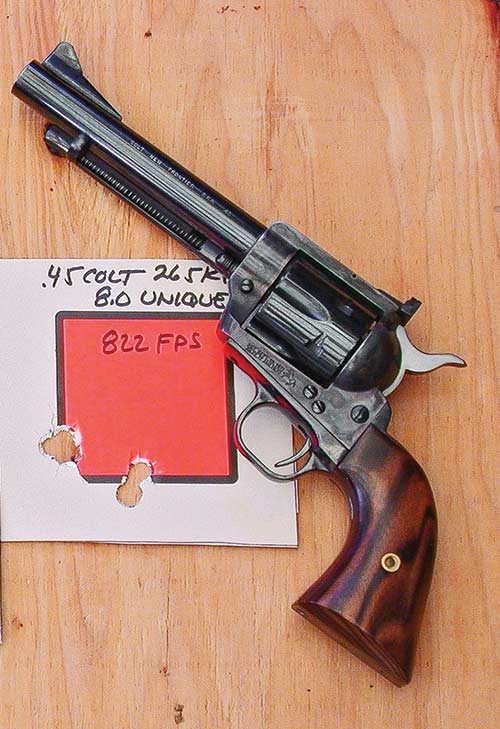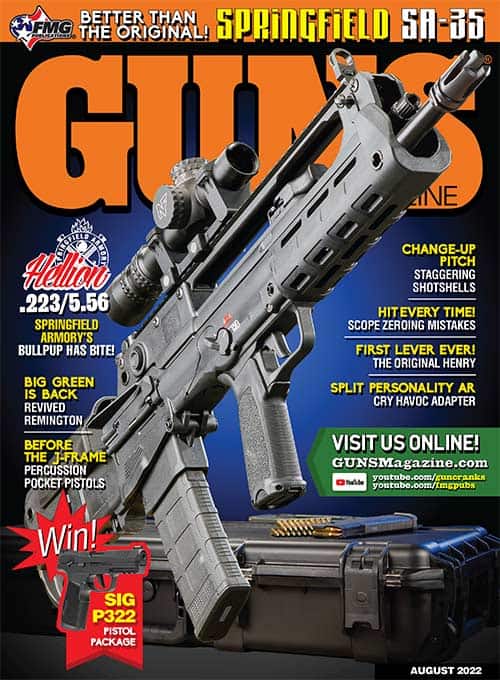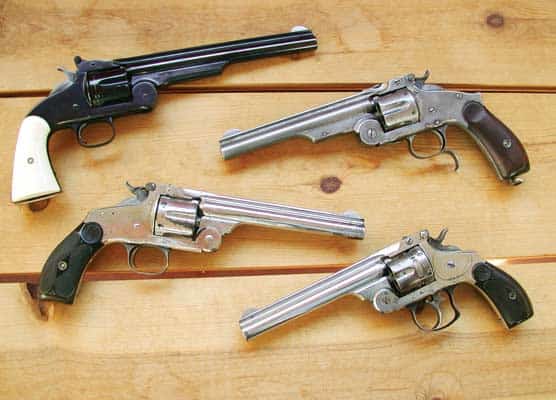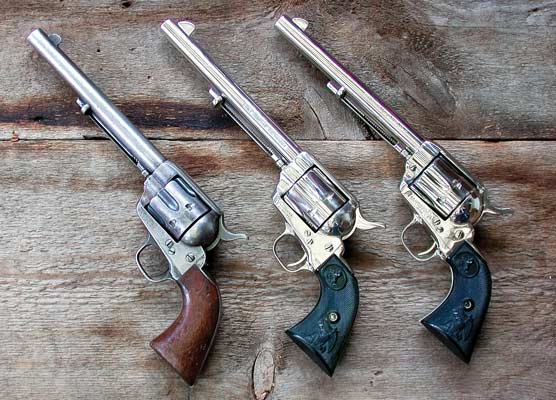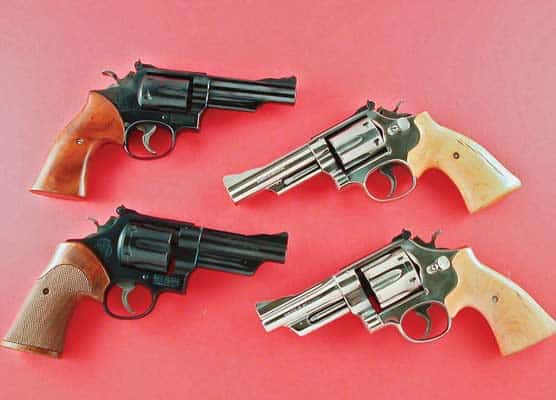Compromise Part IV — The New Frontier
Saving the best for last?
In late 1961, Colt introduced its New Frontier model in honor of President John F. Kennedy’s ringing declaration, “We stand at the edge of a New Frontier ….” To further honor the new young president, Colt went to work on a special engraved presentation model New Frontier to present to JFK. However, the dark days of November 1963 occurred before the Colt was finished and it was never presented.
In The Beginning
The original Colt Single Action Army was produced from 1873 to 1940 with the traditional hog-wallow fixed rear sight matched with a blade front sight. In the 1890s, a very few Target Models, both in the Single Action and Bisley Model configurations, were offered with a flat-topped frame and crudely adjustable sights.
To come up with the New Frontier, Colt basically took their standard Single Action Army — now in its 2nd Generation phase as production had resumed in 1955 — generously flat-topped the frame as Ruger had just accomplished with their brand-new .357 Blackhawk, fitted it with a fully adjustable rear sight matched with a ramp style front sight and the New Frontier was born. Finish on these Colts, which I consider the most beautiful single actions ever factory-produced, consisted of a case-hardened frame as only Colt could do with the balance of the sixgun being Colt’s Royal Blue as found on .357 Magnum Pythons of the same era.
The Colt Single Action Army may be the choice of traditionalists, however, the New Frontier maintains the beautiful looks, feel and balance of the Colt Single Action Army with the added advantage of adjustable sights. It is a rare fix-sighted sixgun that shoots perfectly to point of aim, and even if it does so, it may be with only one particular load.
Making It Work
If such a sixgun shoots low, it is an easy fix, namely simply filing down the front sight. However, if it shoots high, that means the front sight has to be made taller, which is not such an easy fix. If the windage is off, the barrel must be turned using a special vise. The adjustable-sighted Colt New Frontier requires nothing more than a proper fitting screwdriver to change point of impact. The addition of adjustable sights also turns a Colt Single Action into a viable hunting handgun.
The first run of the Colt New Frontier, known as 2nd Generation sixguns, began at serial number 3000NF and finished in 1974 at serial number 72XX. Four chamberings were offered in this first run of magnificent “modern” Colt Flat-Top Target sixguns — .45 Colt, .44 Special, .357 Magnum, and very rarely, .38 Special. Standard barrel lengths of 4-3/4″, 5-1/2″ and 7-1/2″ were cataloged but not in every caliber. Serial numbers for the New Frontier run from 3000NF to 73XXNF.
In 1978, the New Frontier went back into production, joining the 3rd Generation run of the Single Action Army. Just as with the Single Actions, the ratchet on the back of the cylinder and the hand were changed, the full-length cylinder pin bushing was dropped in favor of a collar in the front of the cylinder only, and for some very strange reason, the threads were changed on the 3rd Generation barrels. From 1873 until 1975, the barrel threads of Colt Single Actions had been 20 tpi; however, all 3rd Generation Colts were 24 tpi. The upside to this is 24 tpi happens to be what Ruger frames and barrels are, so I bought all of the New Frontier barrels a local gun shop had when they went out of business and have used these to build several custom sixguns on Three-Screw Ruger Single Actions.
The most bothersome change to me was the profile of the 3rd Generation hammers, both on the Single Action and the New Frontier. The early hammers appeared to have a ground-off spur with a very un-eye-appealing flattened off profile. Thankfully this was eventually changed and all hammers were properly contoured. Serial numbers began at 01001NF, using five digits instead of four. Chamberings were .45 Colt, .357 Magnum, .44 Special and .44-40. Production ended in 1982, however, a few were assembled from parts for the next two years.
The New Frontier had been gone for 30 years and I assumed we would never see it again. That was very unfortunate for sixgunners, so I looked for an alternative, which we will talk about in the next installment on Ruger Blackhawks — namely, having 3rd Generation Colt New Frontier barrels fitted to re-chambered Flat-Top, Old Model Three Screw and 50th Anniversary .357 Magnum Blackhawks.
Diamond Jubilee
The year 2011 marked the 175th Anniversary of the Colt Single Action going all the way back to the first one, the percussion Paterson of 1836. It was fitting for Colt to resurrect the New Frontier to help celebrate this anniversary and all New Frontiers produced this year have a special Anniversary Marking on the barrel consisting of “1836 — 175th Anniversary — 2011” and serial numbers began at 20000NF. Colt at least announced all three standard barrel lengths, 4-3/4″, 5-1/2″ and 7-1/2″ were to be produced in three chamberings of .357 Magnum, .44 Special and .45 Colt.
The first two production runs consisted of the .45 Colt with a 7-1/2″ barrel and the 5-1/2″ .44 Special, both of which I received as test guns. Shortly thereafter I was informed I would soon have a 4-3/4″ version, however, this proved to be long on promise and short on actuality.
This new production 5-1/2″ is without a doubt one of the most beautifully finished Colt Single Action revolvers I have ever experienced. Not only is the finish, consisting of a case-hardened frame and the balance a blue you can see your ancestors in, absolutely stunning, both of these sixguns are also exceptionally well-fitted with no sharp edges.
The grip-frame-to-mainframe fit is as it should be and running a finger over the seams shows a nice smooth transition. Lockup is tight and trigger pulls, while not perfect, are certainly more than adequate. Grip panels are nicely fitted to the grip frame, and although a very plain wood, are shaped to fit my hand perfectly. I’ll take proper fitting and shape over fanciness anytime. Well, up to a point! It now wears beautifully shaped and figured walrus tusk grips by TK Grips.
My 5-1/2″ Compromise Colt New Frontiers consists of the above-mentioned .44 Special example from 2011 as well as two others. Both of these happen to be 3rd Generation sixguns. One is an ivory-stocked .44 Special, which also accepts .44 Russian and .44 Colt loads, and is made even versatile with the addition of a .44-40 auxiliary cylinder. The other is in .45 Colt with custom ebony stocks by the late Charles Able. Any of these three sixguns properly loaded are certainly capable of handling anything in the lower 48. Perfect Packin’ Pistols personified!
It has been several years since Colt cataloged the New Frontier and I doubt we will ever see it again.

Get More Revolver Content Every Week!
Sign up for the Wheelgun Wednesday newsletter here:
